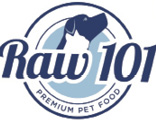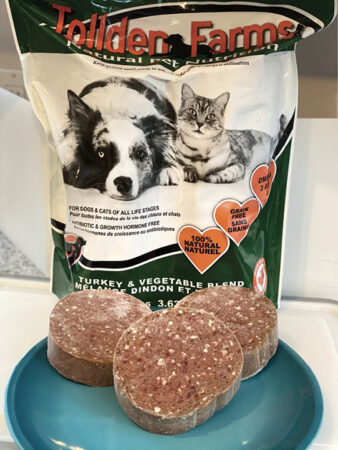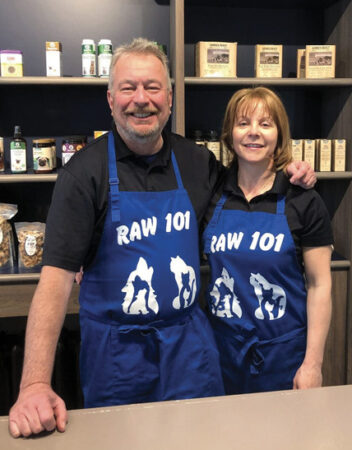
Pet food in Canada – Demand for raw diets to continue its double-digit growth
Food in Canada Staff
Products Pet Food pet food raw Trends
In 2017, leaders at an Ontario company called Dane Creek Capital started buying raw dog food companies across Canada. These companies, falling under Dane Creek’s United Raw banner, include Mountain Dog Food, Pets 4 Life, Spring Meadows, Naturawls and Tollden Farms. Dane Creek also now owns or owns majority shares in raw pet supplement and food companies Rawpaw, True Raw Choice, BaieRun and Bonnie & Clyde. These moves seem to suggest that raw pet food is here to stay — and set to grow.
Mark Warren, Dane Creek co-founder and CEO, explains. “As a pet owner, I became increasing disenchanted with the quality of traditional pet food and decided to give raw food a try,” he says. “I saw the changes in my dogs virtually overnight. And at the same time, I noticed the market share for kibble is declining at about eight per cent a year, traditional canned food is flat or slightly declining and the market for refrigerated and frozen pet food, particularly raw food, was growing dramatically.”
At this point, Warren notes that the raw pet food market has reached double digit annual growth, a trend that’s very likely to continue. “We expect retail space (freezers) for raw products to grow by 25 per cent in 2021,” he says. “We intend to grow organically and to buy more raw food companies in 2021.” In its overall product portfolio, Dane Creek is aiming to offer the right formulation for every pet from coast to coast.
Tollden Farms
The purchase of Tollden Farms by Dane Creek happened only a couple of months ago. It was founded in 2002 in Kemptville, Ont. by spouses Annette and Kevin McAleer. Like other raw pet food firms, its frozen recipes use only human-grade meat and vegetables. Tollden offers three formats for cats and dogs: meat and vegetable blends; meat and botanical blends (lemon grass, dandelion etc.) and a line of DIY meat products for pet owners who are increasingly looking to customize their pets’ diets.
Tollden Farms products can be found at pet food stores in Ontario and parts of Quebec, but Annette McAleer explains that being owned by Dane Creek is going to enable the company to go national in the near future. “Being purchased has opened doors for the business, including recent investments in new machinery,” she says. “This would not have happened if the business had stayed with just me and Kevin.”
McAleer started selling raw food to friends about 20 years ago, after turning around her dog’s health from life-threatening to excellent through the switch to raw food. Since it began, Tollden Farms has seen 15 to 20 per cent growth every year and now has 16 employees. The animal protein, organs and bones arrive at the Tollden plant frozen and the product, as it’s made, stays frozen until the pet owner thaws it.
“We shred and then grind the ingredients,” says McAleer. “The blend then goes through a tube machine, and then the tubes are put in the freezer to bring their temperature down. Then the tubes are sliced it into patties and packaged. We do an average of five batches of about 500 lbs each a day of a given protein and clean all the equipment afterwards according to Canadian Food Inspection Agency guidelines. We’ve done that from day one. We keep a sample of every batch of food produced for about a year. This helps with traceability if an issue were ever to arise.”
Lucy Hillman Johnson opened Raw101 with her husband Tony in Cobourg, Ont. in 2013 after feeding her own dogs raw food and her friends wanting to do the same.
 Tollden does use a lot of electricity every month, but McAleer notes that production of raw food is much less energy-intensive than that of traditional food, which requires large amounts of processing heat.
Tollden does use a lot of electricity every month, but McAleer notes that production of raw food is much less energy-intensive than that of traditional food, which requires large amounts of processing heat.
All of Tollden’s proteins are sourced from local processors except for two. Kangaroo is imported from Australia, where the harvest of this mammal has grown due to the huge population (small buildings with freezers have been placed strategically in various locations around the country). Kangaroo meat is the only ingredient where sourcing has been slowed since the pandemic began, probably says McAleer, because of a slower border inspection process.
The other import is lamb. “We have chosen to go with New Zealand lamb, as it’s grass-fed and naturally raised on pasture,” says McAleer. “We were also not able to locally source the same quality at a reasonable price closer to home. For lamb and some other proteins, we’ve made the decision to not grind bones due to their density and the additional wear on machinery. Instead for certain proteins, we add calcium carbonate to make up the calcium required for a healthy, balanced diet. The added benefit of adding calcium to certain proteins make it possible to cook those diets. This is excellent for dogs and cats that may be immuno-compromised. Diets with bones should never be cooked.”
Vegetables (leafy greens, sweet potatoes, carrots, zucchini) are purchased locally every summer, ground and stored frozen. So far, Tollden has been able to buy enough each year to last until harvest the next year.
McAleer has no worries about sourcing ingredients as Tollden Farms continues to boost production. “We’ve barely scraped the surface of what our suppliers can provide for us,” she says. “For duck and chicken and turkey, we can have it produced specifically for us.”
Customer relationships important
Following a similar path at the start, Lucy Hillman Johnson opened Raw101 with her husband Tony in Cobourg, Ont. in 2013 after feeding her own dogs raw food and her friends wanting to do the same.

Also similarly to Tollden Farms, all protein, bone and organ ingredients are human food grade from federally-inspected meat processing plants. These include chicken, turkey, duck, pork, rabbit and lamb from Ontario, and farmed Atlantic salmon and beef from B.C. “There were a few delays due to COVID-19, especially with pork (due to plant closures) in the spring, and a few times, I ordered double if I felt sourcing would be an issue,” says Hillman Johnson. “The beef comes boneless but we buy a bone paste that they make at our beef plant.”
As with Tollden, everything remains frozen, except that Raw101 does a brisk business with its “Fresh Bulk” option. This product is offered at a reduced price because it’s picked up fresh by customers the day it’s made. The option is also environmentally-friendly; the chosen blend comes in reusable pails, which customers divvy up at their homes as appropriate for their mix of pets and freeze. At its Coburg kitchen, Raw101 produces 400 to 500 pounds of Fresh Bulk on most days.
Some of the Raw101 blends contain vegetables/fruit and some do not, as these ingredients can affect dogs with health issues, says Hillman Johnson. “In blends with vegetables and fruit, we use one fruit, typically apples, blueberries or local strawberries, and change up our mix of vegetables to some extent, with the specifics always going on the label,” she explains. “It’s good for our pets to get different vegetables and fruit. We also add ground whole eggs for protein and calcium in some blends, and organic coconut oil or hemp oil. We do a lot of custom orders for dogs with disease or health issues.”
Indeed, the personal relationship (include personalized labelling) with customers is very important at Raw101 and one reason why Hillman Johnson doesn’t want to have her products in any stores but her own. “We’ve been asked a few times if we want to have our product with other retailers but it’s not the direction we want to go,” she shares. “We have our Cobourg kitchen and store, and we opened a store in the beaches in Toronto in June, a full pet food store with all-natural products, leashes etc. It’s been very busy. We’re looking at a third location in Oakville next. We just put a 900-square-foot addition on our Cobourg kitchen and this will support having a third or even the fourth location. We don’t see any problem with supply from the meat processing plants.”
Hillman Johnson agrees that Canada is just starting to see interest in raw pet food really expand, and that growth will be exponential as more people see the differences in their pets with feeding a fresh, non-processed diet. “It’s great,” she says, “that there are now so many options for consumers.”
~by Food in Canada contributor Treena Hein
Print this page

